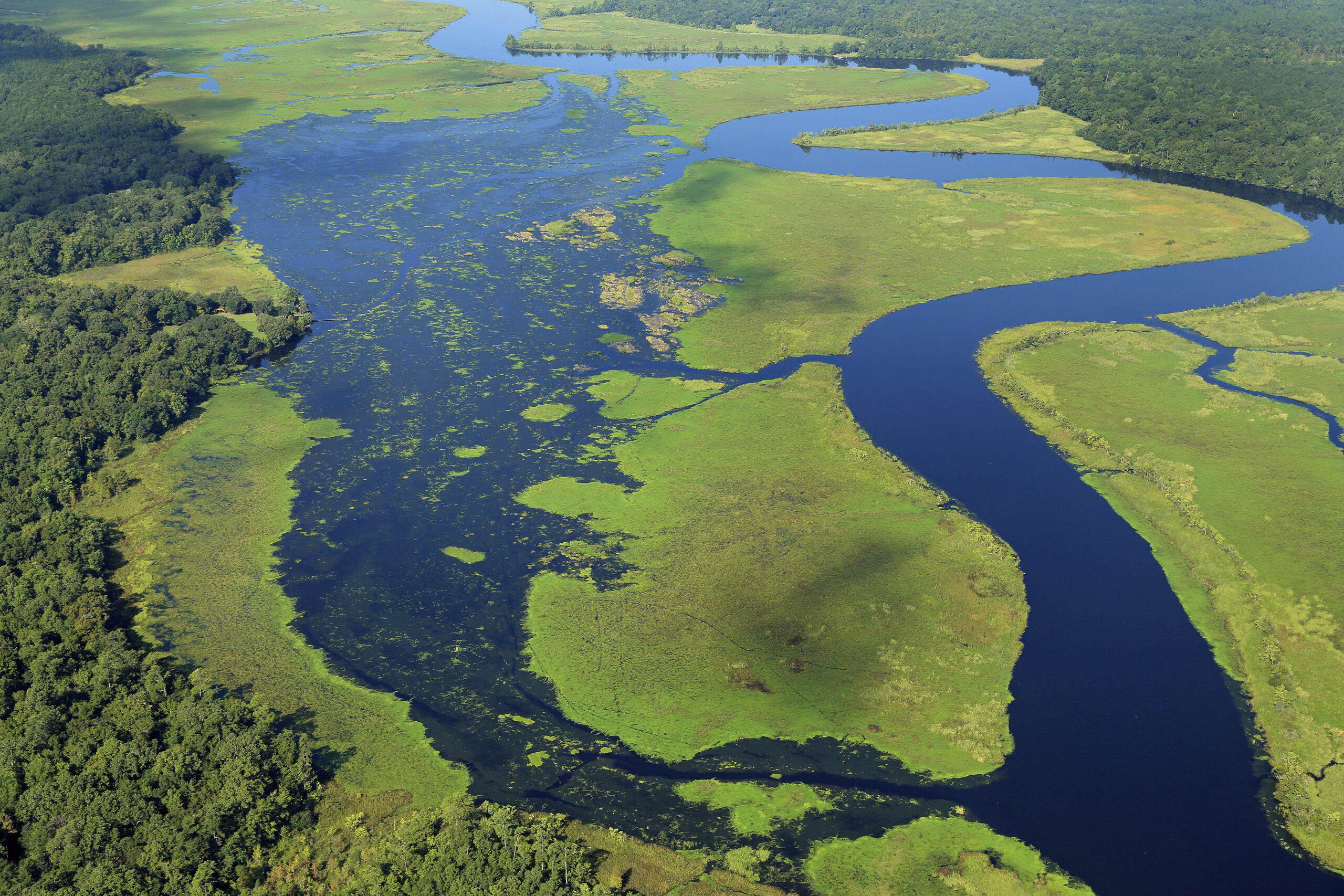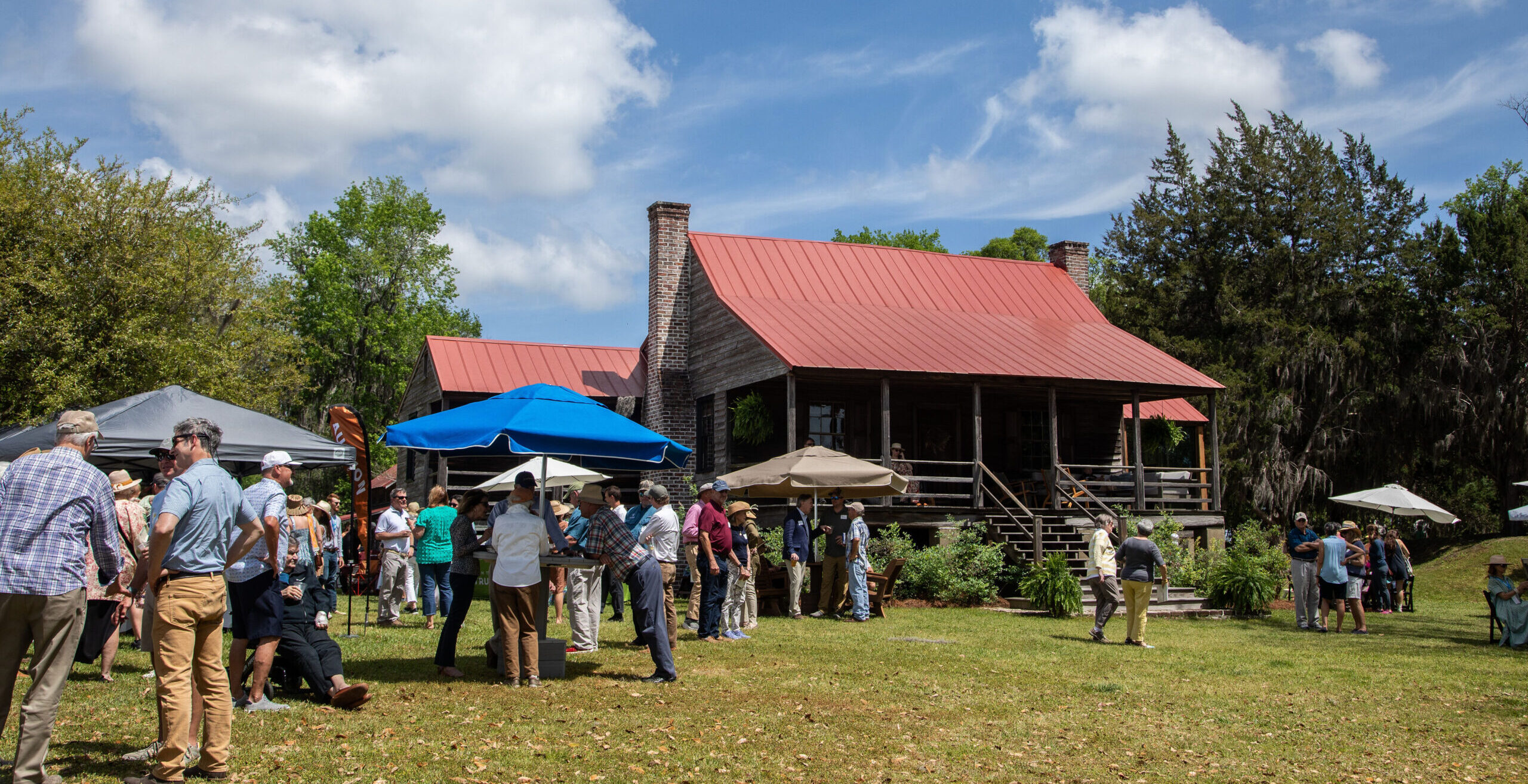At the end of March, the Land Trust Alliance hosted the 2025 Southeast Land Conservation Conference in Asheville, NC. Lowcountry Land Trust staff attended for two days of thought-provoking presentations and roundtable discussions with fellow regional land protection professionals.
Conservation is rooted in resiliency, and this sentiment rang especially true as the conference location and date coincided with the six-month anniversary of Hurricane Helene. The infamous storm led to historic devastation in Western NC, especially along the French Broad River, a few miles from the conference site. With the acknowledgement of the recent natural disaster impacts as the backdrop of the conference, resiliency was a common theme across many presentations and conversations.
During the conference, Lowcountry Land Trust’s Chief Conservation Officer, David Ray, and Community Lands Director, Sam Seawell, shared a presentation titled Establishing Community-Owned, Community Land with the objective of offering attendees a change of mindset in their approach to community conservation, or the practice of relationship-building that delivers tangible land conservation and community benefit.
Two of Lowcountry Land Trust’s recent partnerships were highlighted: the Rutledge Tomb Site in Mount Pleasant and the Beefield Community Park on James Island. Both properties are within resilient settlement communities that have strong generational connections to the land. As a testament to the strength of the relationships formed during these collaborations, David and Sam were joined by leaders from each community: Richard Habersham, President of the Phillips Community Association, and Giovanni Richardson, President of the Battery Island Drive Neighborhood Association.
Conference attendees learned that a key component of successful community conservation is letting the why dictate the how. Collaborative and inclusive partnership allows for a process that navigates the intricacies of protecting community land while aligning with residents’ goals. Lowcountry Land Trust’s forward-thinking buy, protect, transfer, and support model was pioneered by Sam Seawell as an innovative approach to the intricacies of conserving community lands in the Charleston area. By working beyond the classic “buy, protect, transfer” conservation model, support from land trusts may look like sourcing funding that can address needs, connecting leaders with other public partners, or providing volunteers and tools for hands-on improvement work.
Stories shared from the Phillips and Beefield communities were among many of resiliency during the 2025 Southeast Land Conservation Conference. Attendees had the honor of hearing from conservation leaders in Western NC about their work post-Hurricane Helene, including riverbank restoration by Riverlink, and the power of community conservation from neighbors impacted in the region served by the Southern Appalachians Highlands Conservancy. As a true testament to the resiliency provided by conservation, a field trip to Cragnolin Park along the French Broad River showcased a public greenspace that survived the storm thanks to its conserved riparian zone (the transition area between a body of water and the surrounding land) and parallel design with the river. This success story is leading the way for what recovery can look like in other areas.
Community is at the heart of conservation, and Lowcountry Land Trust is proud to work alongside resilient communities, organizations, and leaders. Visit the Land Trust Alliance website to learn more about community conservation work going on regionally and nationally.








